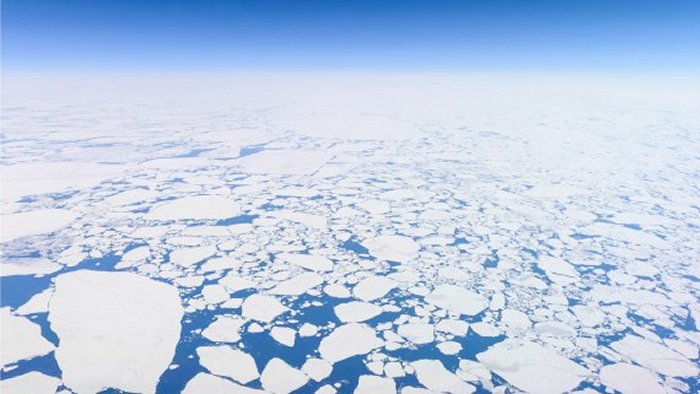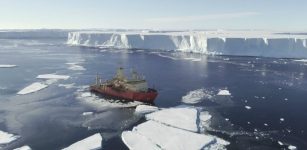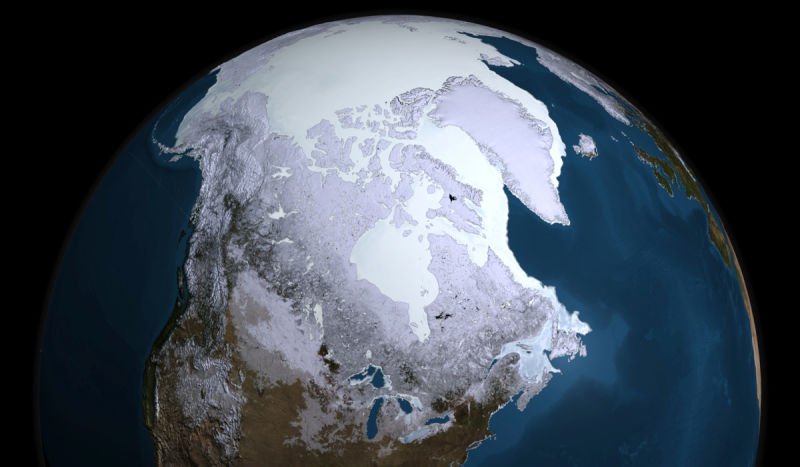Why Do We Have An Ice Age Every 100,000 Years?
MessageToEagle.com – About 1 million years ago our planet experienced an Ice Age every 40,000 years when vast ice sheets covered North America, Europe, and Asia. Suddenly the Ice Age intervals changed from every 40,000 years to every 100,000 years.
This became known as the ‘Mid-Pleistocene Transition’ and the problem was dubbed the ‘100,000-year problem’. Scientists have long sought an explanation as to what was behind this puzzling change. Now, a group of scientists has discovered why we have an Ice Age every 100,000 years.
Experts from Cardiff University suggest that the oceans may be responsible for this change, specifically in the way that they suck carbon dioxide (CO2) out of the atmosphere.
By studying the chemical make-up of tiny fossils on the ocean floor, the team discovered that there was more CO2 stored in the deep ocean during the ice age periods at regular intervals every 100,000 years.

This suggests that extra carbon dioxide was being pulled from the atmosphere and into the oceans at this time, subsequently lowering the temperature on Earth and enabling vast ice sheets to engulf the Northern Hemisphere.
“We can think of the oceans as inhaling and exhaling carbon dioxide, so when the ice sheets are larger, the oceans have inhaled carbon dioxide from the atmosphere, making the planet colder. When the ice sheets are small, the oceans have exhaled carbon dioxide, so there is more in the atmosphere which makes the planet warmer.
See also:
Ancient France Was Once An Exotic Rainforest And Had Amazon-Like Jungles
Seychelles Islands Are Sinking And Will Soon Disappear Underwater
Where Is The Hottest Place On Earth?
By looking at the fossils of tiny creatures on the ocean floor, we showed that when ice sheets were advancing and retreating every 100,000 years the oceans were inhaling more carbon dioxide in the cold periods, suggesting that there was less left in the atmosphere,” Professor Carrie Lear, from the School of Earth and Ocean Sciences said.
Marine algae play a key role in removing CO2 from the atmosphere as it is an essential ingredient of photosynthesis.
CO2 is put back into the atmosphere when deep ocean water rises to the surface through a process called upwelling, but when a vast amount of sea ice is present this prevents the CO2 from being exhaled, which could make the ice sheets bigger and prolong the ice age.
The last ice age ended about 11,000 years ago. Since then, temperatures and sea levels have risen, and ice caps have retreated back to the poles. In addition to these natural cycles, human-made carbon emissions are also having an effect on warming the climate.
MessageToEagle.com
Expand for referencesCaroline H. Lear, Katharina Billups, Rosalind E.M. Rickaby, Liselotte Diester-Haass, Elaine M. Mawbey, Sindia M. Sosdian. Breathing more deeply: Deep ocean carbon storage during the mid-Pleistocene climate transition. Geology, 2016; G38636.1 DOI: 10.1130/G38636.1
Related Posts
-
 Dramatic ‘Shiprock’ Mountain – Sacred To The Navajos As ‘The Rock With Wings’
No Comments | Jun 30, 2016
Dramatic ‘Shiprock’ Mountain – Sacred To The Navajos As ‘The Rock With Wings’
No Comments | Jun 30, 2016 -
 Alarming Dark Forest Theory Explains Why We Cannot Contact Extraterrestrials – Bizarre Or Realistic Scenario?
No Comments | Jul 29, 2018
Alarming Dark Forest Theory Explains Why We Cannot Contact Extraterrestrials – Bizarre Or Realistic Scenario?
No Comments | Jul 29, 2018 -
 How Did Alexander The Great Die?
No Comments | Apr 9, 2016
How Did Alexander The Great Die?
No Comments | Apr 9, 2016 -
 Golden ‘Etruscan’ Orphic Book – Six Golden Pages Of The Oldest Book In History Of Mankind
No Comments | Mar 27, 2020
Golden ‘Etruscan’ Orphic Book – Six Golden Pages Of The Oldest Book In History Of Mankind
No Comments | Mar 27, 2020 -
 Scattered Light Makes The Sky Blue
No Comments | Jan 17, 2016
Scattered Light Makes The Sky Blue
No Comments | Jan 17, 2016 -
 Is A ‘Mirror World’ Hiding Behind Elusive Mysterious Dark Matter?
No Comments | Jan 18, 2016
Is A ‘Mirror World’ Hiding Behind Elusive Mysterious Dark Matter?
No Comments | Jan 18, 2016 -
 Is Earth’s Core Lopsided? Strange Goings-On In Our Planet’s Interior
No Comments | Jun 7, 2021
Is Earth’s Core Lopsided? Strange Goings-On In Our Planet’s Interior
No Comments | Jun 7, 2021 -
 Graeae: Three Sisters Of Fate Who Shared One Eye And Tooth In Greek Mythology
No Comments | Jun 8, 2016
Graeae: Three Sisters Of Fate Who Shared One Eye And Tooth In Greek Mythology
No Comments | Jun 8, 2016 -
 Mysterious Disappearance Of The Eilean Mor Lighthouse Keepers Remains Unsolved
No Comments | Mar 31, 2016
Mysterious Disappearance Of The Eilean Mor Lighthouse Keepers Remains Unsolved
No Comments | Mar 31, 2016 -
 Doomsday Glacier May Be Melting Faster Than Previously Thought – New Study
No Comments | Apr 13, 2021
Doomsday Glacier May Be Melting Faster Than Previously Thought – New Study
No Comments | Apr 13, 2021

